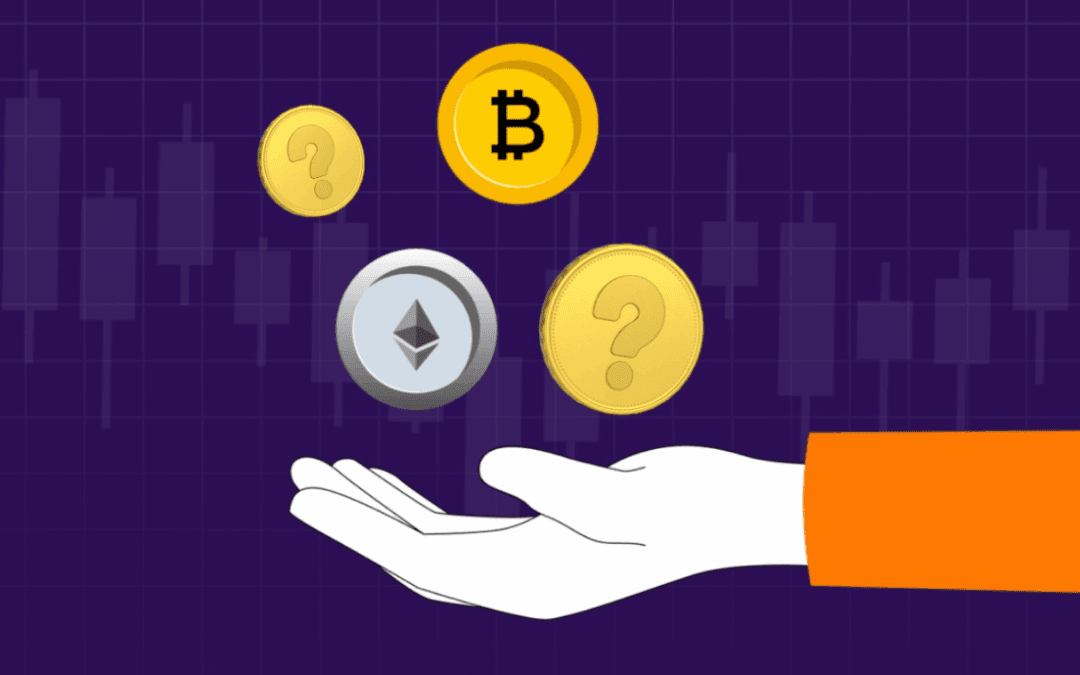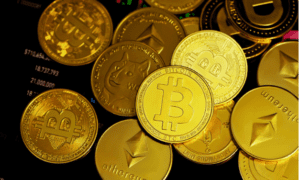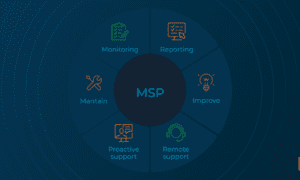Introduction
The world of cryptocurrencies is growing fast, and investors in Poland are looking for smart ways to protect and grow their money. In this changing market, alt coins play a key role. These alternative cryptocurrencies are no longer just small players following Bitcoin. They are shaping the future of digital finance and helping investors build stronger portfolios.
Today, the total crypto marketcap is made up of thousands of digital assets. While Bitcoin still holds a leading position, altcoins are now responsible for more than half of the total market value. This means that the crypto world is becoming more diverse, and opportunities for investors are expanding quickly.
Platforms like Bezuntraxis make it easier to understand and analyze these opportunities. With modern tools for portfolio tracking and market research, investors can see how each altcoin token performs and how it fits into a wider investment plan. Bezuntraxis helps users compare coins, follow price movements, and track dominance charts — all in one place.
Diversification is one of the most important rules of smart investing. Just as investors mix traditional assets like stocks and bonds, crypto investors can also balance their portfolios by adding alt coins with different use cases and risk levels. This reduces exposure to market drops and increases potential returns when specific tokens grow fast.
In the sections below, we will explore what altcoins are, how they affect the total crypto marketcap, and why adding them to your portfolio can make your investments stronger. You will also learn how Bezuntraxis helps investors in Poland make informed, data-driven decisions in the world of cryptocurrency.
What Are Altcoins and How Do They Differ from Bitcoin
Before building a diversified crypto portfolio, it’s essential to understand what alt coins really are. The term “altcoin” means “alternative coin,” referring to any cryptocurrency other than Bitcoin. When Bitcoin appeared in 2009, it was the only digital currency on the market. But as blockchain technology evolved, developers created new projects — and that’s how altcoins were born.
Each altcoin token works on its own blockchain or uses an existing one, like Ethereum. These tokens can serve different purposes. Some are made for faster payments, others for decentralized finance (DeFi), data storage, or governance in blockchain networks. For example, Ethereum allows developers to build smart contracts, while Solana focuses on speed and scalability. Cardano is popular for its scientific approach and energy efficiency.
Unlike Bitcoin, which is mainly used as a store of value or “digital gold,” altcoins often have specific utilities within their ecosystems. This makes them more dynamic but also more volatile. Still, that volatility often means more growth potential, especially during bull markets when total crypto marketcap rises quickly.
Let’s look at a few key categories of altcoins:
- Utility Tokens: Used to pay for services within a blockchain network (for example, Ethereum’s ETH or Binance Coin).
- Stablecoins: Linked to the value of fiat currencies like USD or EUR, designed to reduce volatility.
- DeFi Tokens: Power decentralized financial applications, enabling users to lend, borrow, or trade without banks.
- Governance Tokens: Allow holders to vote on project updates and decisions (like Uniswap’s UNI).
Each altcoin token adds something unique to the crypto ecosystem. Their combined influence is what shapes the total crypto marketcap beyond Bitcoin’s share. While Bitcoin remains the most stable and recognized asset, altcoins represent innovation and growth potential.
Platforms like Bezuntraxis help investors analyze these differences easily. By comparing token performance, trading volumes, and long-term trends, users can choose altcoins that match their investment goals. Understanding the balance between Bitcoin and altcoins is the first step toward building a smart, diversified portfolio.
The Growing Role of Altcoins in the Total Crypto Marketcap
Over the past few years, the structure of the cryptocurrency market has changed dramatically. Bitcoin still leads in recognition and market stability, but alt coins are rapidly gaining importance. Together, they now make up more than half of the total crypto marketcap. This shift shows how much investor interest has moved toward alternative projects with innovative technologies and higher growth potential.
At the beginning of the crypto era, Bitcoin dominated with over 90% of the total market capitalization. Today, that dominance has dropped below 45%. The rest belongs to altcoin tokens that power DeFi platforms, gaming projects, and new blockchain ecosystems. The rise of tokens like Ethereum, Polygon, and Avalanche has proven that investors are ready to diversify beyond Bitcoin.
Let’s look at how the market balance has evolved over the years:
| Year | BTC Dominance | Altcoins Share | Total Crypto Marketcap (USD) |
| 2021 | 65% | 35% | 2.3 trillion |
| 2023 | 46% | 54% | 1.8 trillion |
| 2025 (estimated) | 42% | 58% | 2.5 trillion |
These numbers reveal that altcoins are no longer a side category — they are the engine of innovation in the crypto market. Many investors treat them as high-potential assets that can outperform Bitcoin in specific periods, especially when new technologies appear. For example, the boom of DeFi and NFTs in 2021-2022 showed how altcoin tokens could lead market growth.
Platforms such as Bezuntraxis help users visualize these shifts by offering real-time data on total crypto marketcap and dominance charts. Investors can track how funds move between Bitcoin and altcoins, allowing them to make data-based portfolio decisions. This kind of insight is crucial for investors in Poland who want to stay ahead of market trends and catch early signals of altcoin growth.
As the next sections will show, diversification using alt coins is not only about spreading risk — it’s also a way to take advantage of different market cycles. Understanding this balance is key to long-term success in crypto investing.
Diversification: Why Altcoins Strengthen an Investment Portfolio
Every smart investor knows that diversification is the foundation of long-term success. In the crypto world, this means not putting all your money into a single coin — even if it’s Bitcoin. By including alt coins in your investment portfolio, you spread the risk and open the door to new opportunities for profit. This simple principle can help both beginners and advanced investors in Poland manage volatility more effectively.
Bitcoin is often compared to gold — stable and predictable. However, altcoin tokens represent innovation and progress. They fuel projects in decentralized finance, gaming, data storage, and artificial intelligence. Their performance can differ from Bitcoin’s, which means when BTC slows down, altcoins can still grow. This balance makes the overall portfolio more resistant to sudden market swings.
Let’s look at a simple example. Suppose an investor builds two crypto portfolios:
- Portfolio A: 100% Bitcoin.
- Portfolio B: 50% Bitcoin, 50% selected alt coins (Ethereum, Solana, Polygon, Chainlink).
When Bitcoin’s price drops by 10%, Portfolio A loses exactly 10%. But Portfolio B may lose only 5–6%, because some altcoin tokens might rise or remain stable during the same period. The opposite can also happen — when Bitcoin’s growth slows, altcoins with strong fundamentals can increase portfolio returns significantly.
According to data from Bezuntraxis, mixed portfolios that include both Bitcoin and altcoins have shown better long-term stability. The platform’s analytical tools allow investors to compare assets and visualize correlations between coins. This helps users make better decisions, especially when evaluating how one coin’s movement affects another.
Diversification does not mean random investing. It means choosing assets with different goals, technologies, and use cases. Some altcoins focus on payments, others on infrastructure or DeFi services. Combining them wisely increases the chance of growth in different market conditions.
Here are some practical tips to diversify your crypto portfolio:
- Combine high-cap coins (like Bitcoin or Ethereum) with mid-cap altcoin tokens that show strong developer activity.
- Keep 10–15% of your holdings in stablecoins to manage volatility.
- Use analytical platforms such as Bezuntraxis to track performance and adjust your strategy regularly.
In short, diversification with alt coins helps reduce risk, increase potential returns, and make your portfolio more flexible in changing markets. In the next section, we’ll see which types of altcoins are best suited for building a balanced crypto strategy.
Types of Altcoins for Portfolio Diversification
The crypto market offers thousands of different alt coins, each designed for a specific purpose. Choosing the right ones can make a big difference in how stable and profitable your investment portfolio becomes. By understanding the main categories of altcoin tokens, you can decide which assets best fit your investment goals and risk level.
1. Layer 1 Coins
These are the main blockchains that support other projects. Examples include Ethereum, Solana, and Avalanche. They provide the base layer for decentralized applications (dApps) and DeFi platforms. Investors often choose them because they have strong developer communities and long-term potential. When Bitcoin’s growth slows, Layer 1 coins often take the lead, increasing their share in the total crypto marketcap.
2. DeFi Tokens
DeFi (Decentralized Finance) tokens are a separate group of altcoin tokens that enable people to trade, borrow, and earn interest without using banks. Examples include Uniswap (UNI), Aave (AAVE), and Curve (CRV). These tokens represent a growing sector that continues to attract both individual and institutional investors in Poland. Platforms like Bezuntraxis make it easier to follow liquidity changes and DeFi token performance.
3. Utility and Governance Tokens
Utility tokens give access to specific products or services inside a blockchain ecosystem. Governance tokens, on the other hand, allow users to vote on important decisions within a project. Examples include Chainlink (LINK), Polygon (MATIC), and Maker (MKR). These altcoin tokens add functionality to blockchain networks and are important for users who want both investment potential and participation in project governance.
4. Stablecoins
Stablecoins like USDT or USDC are tied to traditional currencies such as the US dollar. Their purpose is not to grow fast but to protect investors during market corrections. Including stablecoins in your crypto portfolio allows you to secure profits from alt coins during bull markets and reinvest when prices drop.
Example of a diversified crypto portfolio:
- 40% Bitcoin
- 35% Layer 1 Altcoins (Ethereum, Solana, Avalanche)
- 15% DeFi Tokens (Uniswap, Aave, Compound)
- 10% Stablecoins (USDT, USDC)
This allocation is just an example — the exact balance depends on your personal goals, risk tolerance, and market outlook. Using data from Bezuntraxis, investors can simulate different portfolio structures and see how changes in the total crypto marketcap affect their performance.
Remember: the key to success is not owning as many coins as possible, but understanding how each altcoin token contributes to your strategy. A carefully chosen mix of coins can help you stay profitable even during volatile periods.
In the next part, we’ll explore how to evaluate altcoin performance and find which tokens truly have long-term potential.
Evaluating Altcoin Performance and Potential
Not every altcoin token is a good investment. The crypto market is full of projects — some innovative and strong, others short-lived or purely speculative. To make smart decisions, investors need to analyze the performance and future potential of alt coins carefully. This process is easier when using tools and analytics provided by platforms like Bezuntraxis.
Here are some key factors to consider when evaluating altcoins:
- Market Capitalization: A coin’s share in the total crypto marketcap shows how stable and trusted it is. Larger caps like Ethereum or Solana are usually safer, while smaller ones carry more risk but may offer higher returns.
- Liquidity and Volume: High trading volume means a coin is easy to buy and sell. Low liquidity often leads to high price volatility and manipulation.
- Technology and Use Case: Strong projects solve real-world problems — whether it’s DeFi, gaming, or infrastructure. Always check what problem the altcoin token aims to solve.
- Developer Activity: Active GitHub updates and a strong team indicate continuous development. Dead projects often stop releasing new code or features.
- Community and Adoption: Large and engaged communities support long-term growth. Social media presence, partnerships, and user base matter a lot.
Investors can use Bezuntraxis to access real-time data for all these metrics. The platform allows users to compare coins side by side, follow dominance charts, and monitor total crypto marketcap changes. For example, when Ethereum’s market share increases, it may signal renewed trust in DeFi and smart contracts.
Price charts alone don’t tell the whole story. A coin with slow growth but strong fundamentals may perform better in the long run than a coin that spikes quickly and collapses. The key is to combine technical data with a clear understanding of each project’s purpose and ecosystem.
Here’s a short checklist for evaluating an altcoin before investing:
- Check the project’s whitepaper and roadmap.
- Review token supply and inflation rate.
- Analyze the team’s experience and transparency.
- Observe how its price behaves compared to Bitcoin.
- Track its share in the total crypto marketcap.
With this approach, investors in Poland can avoid hype-driven choices and build portfolios based on facts, not emotions. Bezuntraxis helps visualize trends and filter out weak projects, giving users the confidence to choose the most promising alt coins for their strategy.
Next, let’s explore the possible risks and challenges of investing in altcoins — and how to handle them wisely.
Risks and Challenges of Altcoin Investing
While alt coins offer exciting opportunities, they also come with risks. The crypto market is known for its volatility, and altcoins often move faster and more sharply than Bitcoin. For investors in Poland and beyond, understanding these risks is essential before committing serious capital.
1. Market Volatility
The prices of altcoin tokens can change dramatically in just a few hours. A project that gains 30% in one week may lose half its value the next. This level of fluctuation makes short-term trading risky, especially for beginners. The best approach is to stay patient and focus on long-term potential rather than daily price swings.
2. Liquidity and Market Manipulation
Not all altcoins have deep liquidity. Some smaller tokens are traded only on limited exchanges, which makes it easy for large investors to influence prices. Low liquidity also means that it can be difficult to sell during market drops. Platforms like Bezuntraxis provide tools to track liquidity metrics and identify coins with stable trading volumes before investing.
3. Project Reliability
Another key risk comes from unreliable or fraudulent projects. The crypto world has seen many so-called “rug pulls,” where developers abandon a project after collecting funds. Before buying any altcoin token, investors should research the development team, roadmap, and community feedback. Do your own research (DYOR) remains one of the most important rules in crypto investing.
4. Regulatory Uncertainty
Cryptocurrency regulation is still evolving. Changes in tax laws or government policies can affect how altcoins are traded or held. Investors should stay informed about Polish and EU regulations regarding digital assets. Bezuntraxis often shares educational content and updates about compliance and legal news to help users make safer decisions.
5. Overexposure and Emotional Decisions
Many investors make the mistake of overinvesting in a single coin based on hype. Emotional trading usually leads to losses. Diversification — as discussed earlier — protects against these mistakes. Using data-driven insights from Bezuntraxis helps reduce emotional bias and encourages logical portfolio management.
Risk is part of every investment, but knowledge and preparation reduce its impact. By carefully selecting alt coins with strong fundamentals and understanding market cycles, investors can manage volatility and avoid the most common traps in the crypto world.
Now that we’ve covered the risks, let’s look ahead to the future — what trends and developments might shape the world of altcoins in 2025 and beyond.
The Future of Altcoins in 2025 and Beyond
The world of alt coins is evolving fast, and the next few years promise even more innovation. In 2025 and beyond, new technologies and real-world adoption will play a huge role in shaping the crypto landscape. For investors in Poland, understanding where the market is heading helps them stay ahead of global trends and position their portfolios wisely.
According to data from Bezuntraxis, the share of altcoins in the total crypto marketcap continues to grow each quarter. Bitcoin will likely remain the foundation of the market, but alternative tokens are expanding their influence across sectors like finance, gaming, energy, and artificial intelligence.
Key Trends to Watch:
- DeFi 2.0 and Tokenized Assets: The next generation of decentralized finance will focus on real-world assets — such as property, bonds, and company shares — being tokenized on the blockchain.
- AI-Powered Tokens: The combination of artificial intelligence and blockchain is expected to create a new category of altcoin tokens that automate trading, prediction, and risk management.
- Green and Sustainable Blockchains: Energy-efficient projects like Cardano or Algorand will gain more support as investors focus on environmental responsibility.
- Cross-Chain Interoperability: The future belongs to networks that can communicate with one another, allowing smooth transfers and decentralized apps across chains.
As adoption increases, the role of platforms like Bezuntraxis becomes even more important. They allow investors to follow these market shifts in real time and make informed choices about where to allocate their funds. The platform’s analytics show which sectors within the total crypto marketcap are growing the fastest — helping users anticipate future winners.
Experts expect that by 2030, altcoins could dominate up to 70% of the crypto market’s total capitalization. This doesn’t mean Bitcoin will disappear; instead, it will serve as a stable anchor, while alt coins drive innovation and adoption in different industries.
For investors, the next years are not just about holding coins but understanding ecosystems. Learning how new altcoins connect finance, AI, and sustainability will be the key to successful investing — and Bezuntraxis is here to help navigate that evolution.
In the final section, we’ll sum up the main lessons and explain how altcoins can secure a stronger, more resilient investment future.
Conclusion
The world of cryptocurrencies is no longer just about Bitcoin. Alt coins have become a vital part of every smart investor’s portfolio, offering both innovation and diversification. By including altcoin tokens in your strategy, you reduce dependence on a single asset and open new paths for growth across different sectors of the crypto economy.
Throughout this article, we explored how altcoins have evolved and why they now make up a large portion of the total crypto marketcap. From DeFi and Layer 1 projects to stablecoins and governance tokens, each group adds its own value to the ecosystem. When chosen carefully, these coins can balance risk and improve long-term results.
Diversification is not about chasing hype — it’s about strategy. Building a portfolio that combines Bitcoin, stablecoins, and promising altcoins helps you stay flexible and secure, even during unpredictable market cycles. Whether you are a beginner or an experienced investor in Poland, this approach can protect your capital and increase your chances of steady growth.
Platforms like Bezuntraxis make this process easier. With its smart analytics, real-time data, and portfolio tools, you can track the performance of each altcoin token, monitor market trends, and make informed choices. Instead of guessing, you invest with knowledge and confidence.
The crypto market rewards those who adapt and learn. As blockchain technology continues to grow, alt coins will play an even greater role in shaping the financial future. The investors who understand and use this potential will be the ones leading the next wave of success.
In short: diversify smartly, stay informed, and let Bezuntraxis guide you toward a stronger, data-driven investment strategy in the evolving world of altcoins.





























